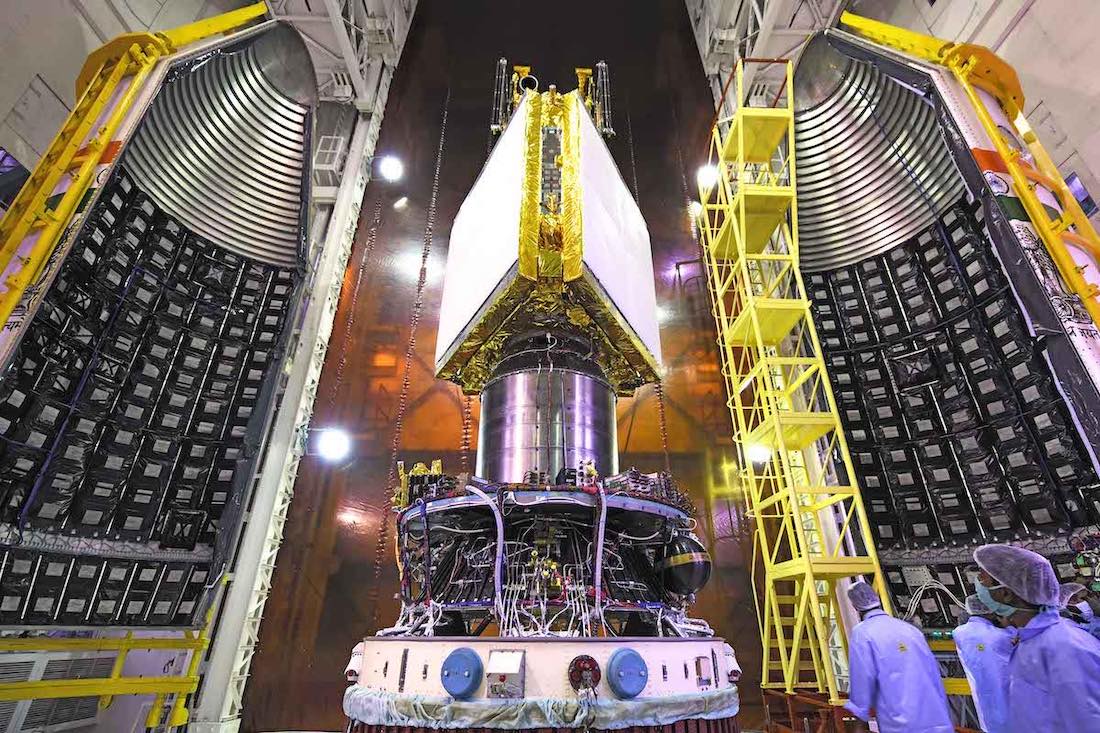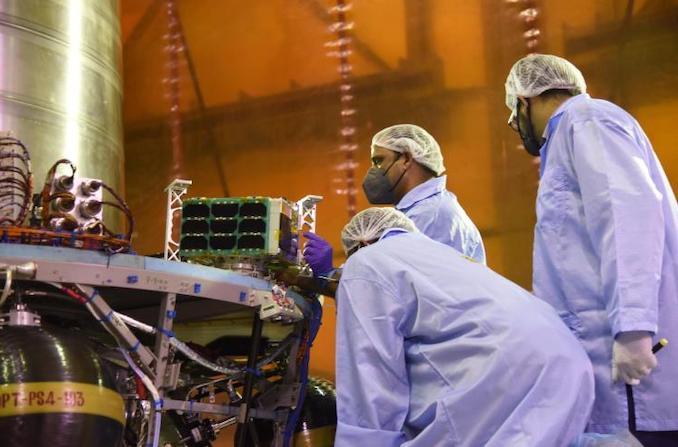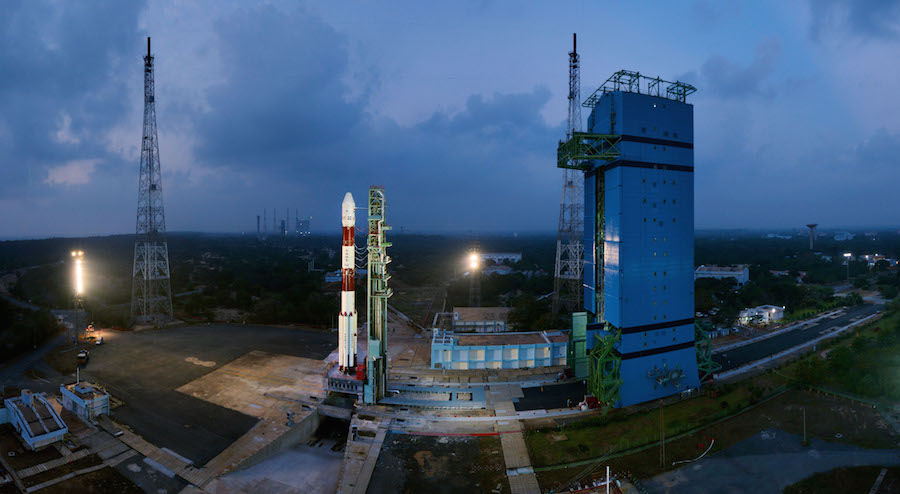
An Indian Polar Satellite Launch Vehicle is preparing to soar into orbit Sunday with an Indian radar imaging satellite and two rideshare payloads, including one built in the United States in partnership with science institutes in India, Singapore, and Taiwan.
The nearly 146-foot-tall (44.4-meter) launch vehicle is poised to take off at 7:29 p.m. EST Sunday (0029 GMT Monday) with India’s EOS 4 Earth observation satellite.
The PSLV is stacked for liftoff from the Satish Dhawan Space Center on India’s east coast. Located on Sriharikota Island north of Chennai, the spaceport is India’s primary launch site. Launch from the Indian space base is set for 5:59 a.m. local time Monday, about a half-hour before sunrise.
The launch will mark the first flight of a PSLV since last February, a slowdown in India’s launch cadence partially blamed on impacts from the COVID-19 pandemic. India has launched 53 PSLV missions since 1993, flying as many six times in a single year after finding a niche in the international launch market to deliver small and medium-size satellites into orbit.
But India has launched just three PSLV flights in the last two years. The pandemic forced India’s space agency to pause launch preparations, and many of the kinds of satellites once launched by the PSLV have moved to other rockets, primarily SpaceX’s Falcon 9 and emerging launchers from companies like Rocket Lab.
India’s PSLV is capable of delivering more than 3,850 pounds (1,750 kilograms) of payload to a 386-mile-high (622-kilometer) polar orbit, placing its lift capability above that of most of the commercial small launch companies, but well below SpaceX’s Falcon 9.
The launch will also be the first orbital mission from India since the failure of the country’s more powerful GSLV Mk.2 rocket in August. A technical problem with the rocket’s third stage prevented it from reaching orbit with an Indian Earth observation satellite.
The PSLV flight Sunday will launch the 3,770-pound (1,710-kilogram) EOS 4 radar satellite into a polar orbit at an altitude of 328 miles (529 kilometers), according to a mission press kit released by the Indian Space Research Organization.

Two secondary payloads will be along for the ride: The 39-pound (17.5-kilogram) INS 2TD Earth-imaging and technology demonstration microsatellite and the 18-pound (8.1-kilogram) INSPIRESat 1 spacecraft.
India’s PSLV will fly in its most powerful configuration, called the PSLV XL, with six strap-on solid rocket boosters. The boosters and core stage motor, also burning pre-packed solid propellants, will generate around 1.7 million pounds of thrust to send the rocket downrange over the Bay of Bengal.
The rocket’s liquid-fueled second stage, a solid-fueled third stage, and a fourth stage will guide the three satellites into orbit, steering the rocket southeast, then south to avoid flying over Sri Lanka.
The PSLV will deploy the EOS 4 spacecraft nearly 18 minutes after liftoff. About a minute later, the rocket will release its two rideshare payloads.
The EOS 4 satellite, formerly named RISAT 1A, will begin a 10-year mission surveying the planet with a radar imager. The spacecraft will unfurl its solar panels and C-band radar antenna shortly after separating from the PSLV’s fourth stage.
According to ISRO, the EOS 4 satellite will collect imagery for use in agriculture, forestry, flood control, soil moisture, and hydrology applications. Radar remote sensing satellites can see Earth’s surface in day and night, and aren’t obscured by cloud over like optical imaging missions.

The INS 2TD satellite carries a thermal imaging camera for Earth observations, serving as a technology demonstrator for a future satellite India is developing in cooperation with Bhutan.
INSPIRESat 1 is a joint project between the University of Colorado’s Laboratory for Atmospheric and Space Physics and the Indian Institute of Space Science and Technology, with additional contributions from institutions in Singapore and Taiwan.
It host a scientific instrument to study the dynamics of Earth’s ionosphere, a layer of the upper atmosphere where the influences of terrestrial weather and space weather come together, impacting satellite operations and radio communications.
Another instrument on INSPIRESat 1 is an X-ray spectrometer funded by NASA to observe solar flares.
The INSPIRESat 1 spacecraft was assembled and tested in Colorado and shipped to India to prepare for launch.
Email the author.
Follow Stephen Clark on Twitter: @StephenClark1.
from Spaceflight Now https://ift.tt/NR3L4zf
via World Space Info







0 comments:
Post a Comment